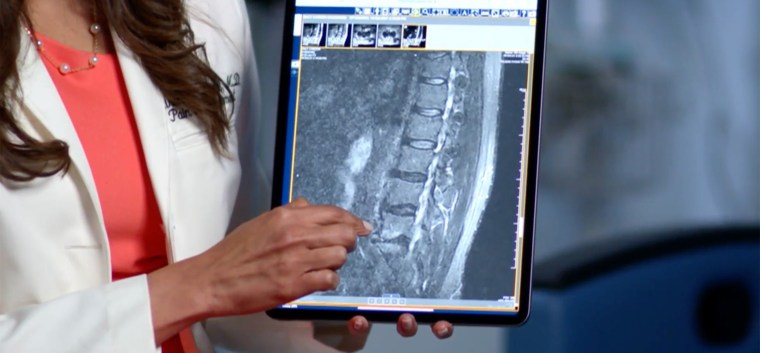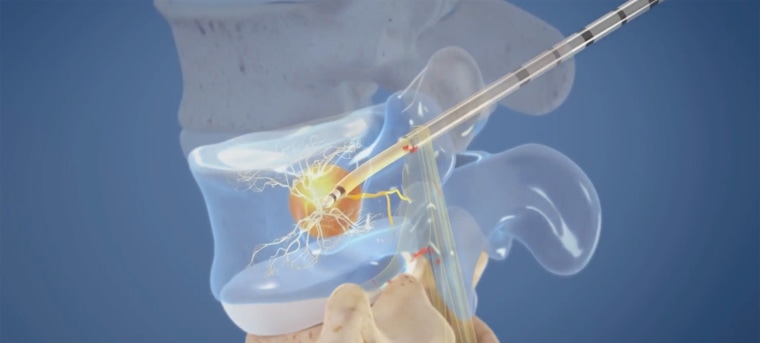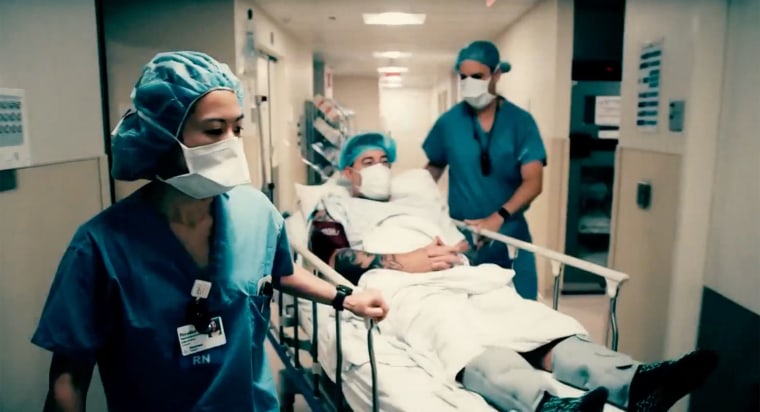For years, Carson Daly needed to address his chronic lower back pain, but he couldn’t bring himself to get a magnetic resonance imaging test, a crucial first step.
The TODAY co-host shared on Monday that the main reason for his reluctance was his generalized anxiety disorder, which had him fearing the tightly enclosed tube usually used to conduct MRIs. Carson has spoken of his mental struggles with anxiety, but this shows how the condition has affected his physical health, as well.
"For years, I was too scared to ever get an MRI because of my panic attacks because it's so claustrophobic," he said. "So I put this whole thing off for years."
He said he finally discovered a different type of MRI in which the patient is standing up instead of lying flat. It allowed him to get the much-needed test, which led him to a procedure he hopes will finally be a breakthrough after years of back pain caused by a snowmobile accident in 1997.
Carson, 48, shared his story on TODAY Monday of undergoing a noninvasive procedure called Intracept to address the pain caused by a T12 compression fracture he suffered in his back while working for MTV in Aspen, Colorado, 25 years ago.
Dr. Kiran Patel, the director of neurosurgical pain at Lenox Hill Hospital in New York City, showed the MRI image on TODAY and noted that it clearly showed changes in the bone in the affected area of Carson's back that were causing him pain.

The Intracept procedure involved Patel going in with a probe that heats up the nerve root in the area causing pain in order to prevent the nerve from sending signals to the spinal cord and then the brain. Patel likened the ablation — a medical procedure where a body part or tissue or its function is removed or destroyed using heat or another method — to turning off notifications on your cell phone.

Patel also clarified that the Intracept procedure is for patients with vertebrogenic back pain, meaning the bones in the lower back are causing the pain. The procedure is also for patients who have had more than six months of pain and failed to find any relief from other pain management methods.
Carson had grown frustrated after having tried physical therapy, sports massages, yoga and Pilates over 25 years with no significant reduction in his back pain. He also has had to modify his workouts and training at Tiger Schulmann's Martial Arts due to his ongoing back issues.
"I've tried everything, so this procedure is really considered my Hail Mary," he said. "It’s like the last thing I could do to possibly get relief because honestly nothing really worked."
The regular pain also has had its effects at home.
"It’s affected my interaction with my family," Carson said. "One thing I love to do is get down on the ground and let them jump on me and roll around and play, and that’s the stuff I can’t do, especially with Goldie, my 2-year-old."
Patel made an incision the size of a baby aspirin in Carson's back during a one-hour procedure that only left him with a little soreness.

He demonstrated on TODAY Monday how he is able to move into positions that used to instantly cause sharp pains. He is able to lean over as if he is about to hit a golf ball, which he said used to be a position that constantly caused pain.
"It is not a cure-all, but I'm glad I did it," he said.
"I'm ramping up the physical activity now," he continued. "It gives you hope. If you have back pain, you wear pain. You don't even realize you're wearing it any more, constantly groaning."
He shared how he was able to play "running bases" with his children at a family barbecue on Sunday — an activity he used to always have to beg out of. But this time when his kids asked if he wanted to play, he had no hesitation.
"I looked at them and said, 'You're damn right I will,'" he said with a smile. "And that's what it's about. It's not about anything else to me."
While Carson is celebrating what he hopes is an important change in his health, there has been one downside to the procedure.
"Well, I got away with years of not having to do the dishes," he joked. "So now I’m a little worried that (my wife) Siri’s going to put me right back in the kitchen because I’m running out of excuses."
He also offered advice to anyone struggling with chronic back pain and anxiety: Ask your health provider if you're a candidate for the Intracept procedure, and know that a standing MRI option is available in some medical facilities.